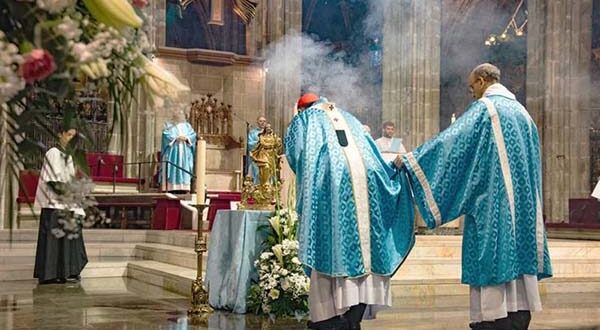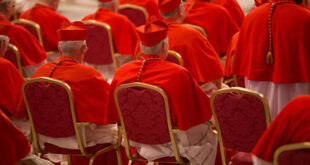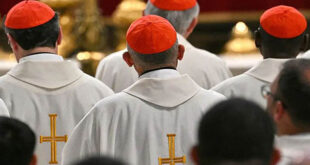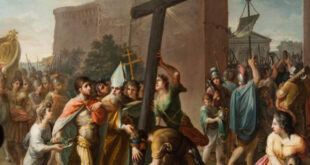In the rich tapestry of traditions and symbols within the Catholic Church, the use of colors in the liturgy is not a minor detail but a visual expression of faith that bridges earthly beauty with heavenly realities. One such tradition, as unique as it is significant, is the privilege granted to Spain (and, by extension, to some regions of Hispanic influence) to use the color blue during the solemnity of the Immaculate Conception. This privilege not only highlights Spain’s profound connection to the Virgin Mary but also invites us to reflect on the purity, grace, and promise of redemption that she represents.
History and Origin of the Privilege
The use of blue vestments in the liturgy for the feast of the Immaculate Conception has its roots in the 17th century, a time when Spain was a stronghold for defending the dogma of the Immaculate Conception—centuries before its official proclamation in 1854 by Pope Pius IX. Devotion to the Immaculate Conception was already fervent in the Spanish kingdoms, with theological debates, processions, and pious practices exalting Mary as conceived without original sin.
The privilege was granted by the Holy See in recognition of this fervent devotion and Spain’s decisive role in promoting this Marian truth. In 1760, Pope Clement XIII formalized this special permission for the churches of Spain and its colonial territories, allowing the use of light blue vestments during the celebration of the solemnity.
Theological Significance of the Color Blue
In Catholic liturgy, colors serve a pedagogical and spiritual purpose. Blue, although not part of the general set of liturgical colors (white, red, green, purple, black, and rose), holds profound symbolism. Traditionally associated with the Virgin Mary, blue represents purity, fidelity, the heavens, and the infinite. It is a color that lifts our gaze toward the eternal and reminds us of Mary’s unique mission as the Mother of God and model of holiness.
In the context of the Immaculate Conception, blue highlights Mary’s singular purity, preserved from original sin from the moment of her conception by a special privilege of God. This anticipated grace not only prepared Mary to be the Ark of the New Covenant but also emphasizes the redemptive power of Christ, whose sacrifice transcends time.
A Devotion Beyond Liturgy
The privilege of using blue on the feast of the Immaculate Conception is not just a liturgical detail; it reflects a deep bond between Marian spirituality and Spanish cultural identity. The devotion to the Immaculate Conception was proclaimed as Spain’s patroness in 1761, and in Latin America, this tradition took deep root, enthusiastically adopted by local communities.
The choice of blue is also closely tied to artistic and popular expressions of this devotion. From the sky-blue robes adorning Marian statues to the tiles that decorate churches and homes, blue serves as a constant reminder of Mary’s maternal presence and her intercession in our lives.
The Proclamation of the Dogma and Its Contemporary Relevance
Although the Spanish privilege predates the dogma, the official proclamation of the Immaculate Conception as a truth of faith in 1854 marked a pinnacle in the history of this devotion. In the papal bull Ineffabilis Deus, Pope Pius IX declared that Mary, from the first moment of her conception, was preserved immune from all stain of original sin—a doctrine deeply rooted in Scripture and Tradition.
In today’s world, where spiritual and ethical challenges are increasingly complex, the message of the Immaculate Conception resonates powerfully. Mary teaches us that God’s grace is sufficient to transform our lives and that purity of heart is not an unattainable ideal but a call to live in friendship with God.
Practical Applications: Living the Spirituality of the Immaculate Conception
- Consecrate Yourself to Mary: Following the example of saints like St. Louis de Montfort, consecration to Mary is a powerful way to live under her protection and guidance, fully trusting in her intercession.
- Imitate Her Virtues: Mary’s purity, humility, obedience, and love are beacons that illuminate our path to holiness. In a world full of distractions and temptations, her example inspires us to focus on what is truly essential.
- Pray the Rosary: This “spiritual weapon” not only connects us with the life of Jesus through Mary’s eyes but also allows us to meditate on the mystery of redemption, of which the Immaculate Conception is a key component.
- Foster Family Devotion: The celebration of the Immaculate Conception is an opportunity to gather the family in prayer, renew our trust in Mary’s intercession, and cultivate a living faith in the home.
- Recognize the Dignity of Every Person: Just as Mary was created without blemish, every human being is called to live in grace and dignity. This recognition should motivate us to defend life, justice, and truth in our communities.
A Heritage That Invites Us to Look to Heaven
The Spanish privilege of using the color blue on the feast of the Immaculate Conception is not just a liturgical ornament but a spiritual heritage that invites us to contemplate God’s love through Mary. It reminds us that, as her children, we are called to live in grace, trust in her intercession, and strive for holiness in our daily lives.
In every Mass where the celestial blue of the vestments shines, we are offered a glimpse of heaven, a promise of redemption, and a reminder that under Mary’s mantle, we always find refuge and hope. May this tradition inspire us to deepen our faith, to love our heavenly Mother more, and to live the Gospel with joy.






